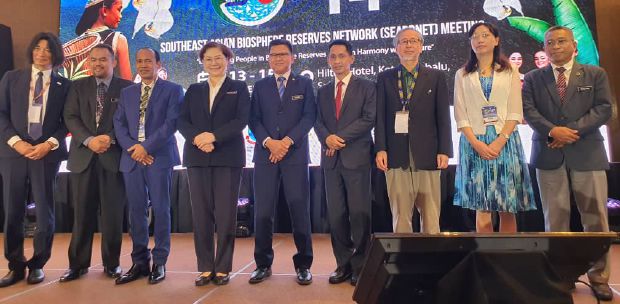The International Union for Conservation of Nature (IUCN) is one of the foremost global organisations advocating the protection of nature.
Governments and civil society organisations convened in 1948 to create the IUCN to protect nature, encourage international cooperation, and provide scientific knowledge and tools to guide conservation.
IUCN played a fundamental role in creating the Ramsar Convention on Wetlands (1971), the World Heritage Convention (1972), the Convention on International Trade in Endangered Species, (1974) and the Convention on Biological Diversity (1992).
Today, with more than 1,300 members, including states, government agencies, non-governmental organisations and indigenous peoples' organisations, and thousands of supportive experts, IUCN continues to champion nature-based solutions, such as he United Nations' Paris climate change agreement and the 2030 Sustainable Development Goals.
It was, therefore, a welcome development when, at its World Congress in Marseille two weeks ago, the IUCN approved a motion supporting the protection of at least 30 per cent of land and ocean by 2030, popularly called "30x30," adding that "the evolving science… supports protecting, conserving and restoring at least half or more of the planet" to reverse biodiversity loss, address climate change and "as a foundation for sustainably managing the whole planet".
It also stressed the need to focus on sites of particular importance for biodiversity, in well-connected systems of protected areas and other effective area-based conservation measures by 2030 in the post-2020 Global Biodiversity Framework, an agreement being developed under the auspices of the CBD.
It also resolved that: "The full and effective participation of indigenous peoples and work towards the implementation of all protection, conservation and restoration activities with the free, prior, and informed consent of indigenous peoples, and with appropriate recognition of the rights of indigenous peoples to their lands, territories and resources, as set out under the United Nations Declaration on the Rights of Indigenous Peoples (UNDRIP), and full respect for their diverse knowledge systems."
And: "The full and effective participation of local communities in the protection, conservation and restoration activities, with the recognition of customary and local governance practices as appropriate, along with their diverse knowledge system."
In Marseille, at a parallel summit, indigenous peoples' organisations from six continents presented the "global indigenous agenda"— the first event of its kind at an IUCN World Conservation Congress.
Indigenous peoples demanded that "secure recognition and respect for collective original rights and the management of land, territories, waters, coastal seas and natural resources".
Other activists took a tougher stance. A London-based NGO called 30x30 "nothing more than a sound bite, green lies. History has shown that promises are made, but eventually it is impossible for forest-dwellers to live until they are finally thrown out of their generational homes for centuries... We see no real signs that this is going to change".
However, IUCN director-general Bruno Oberle said: "Our global goal of protecting the earth and conserving biodiversity cannot succeed without indigenous leadership, support and partnership".
The strong, sympathetic language included in the resolutions on the role of indigenous people and local communities (IPLCs) provide a commitment by the global community to peoples who make up only five per cent of the world's population but contribute significantly to its diversity of plants and animals, as more than 80 per cent of the world's remaining biodiversity is found within their rural areas.
The conflict between development and the rights of IPLCs is being played out at the global and local level, as seen in the proposed degazetting of the Kuala Langat North Forest Reserve to make way for mixed development.
The area has unique biodiversity and is the ancestral home of some 2,000 Orang Asli of the Temuan tribe. The proposed development puts at risk the Temuan people's livelihoods, culture and heritage.
In an exemplary show of "people's power," nearly 50,000 people objected to the move, as did state legislators of different political stripes.
Earlier this month, the Selangor government abandoned the plan to degazette the area.
This episode drives home the point that in protecting nature, public understanding and, eventually, its unequivocal support can avert ugly consequences and trigger change.
The writer is chairman of Atri Advisory, and ambassador and science adviser of the Campaign for Nature






